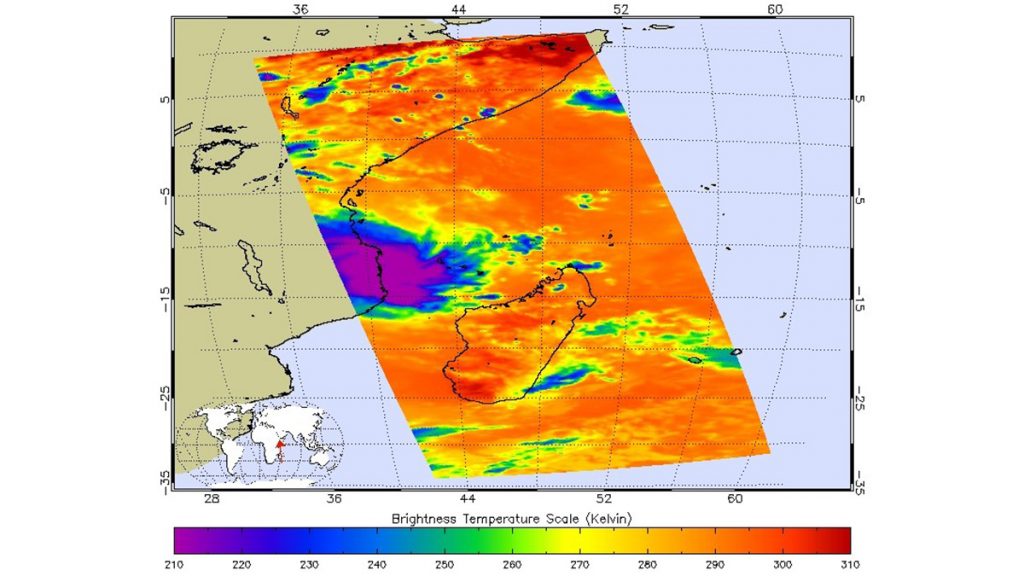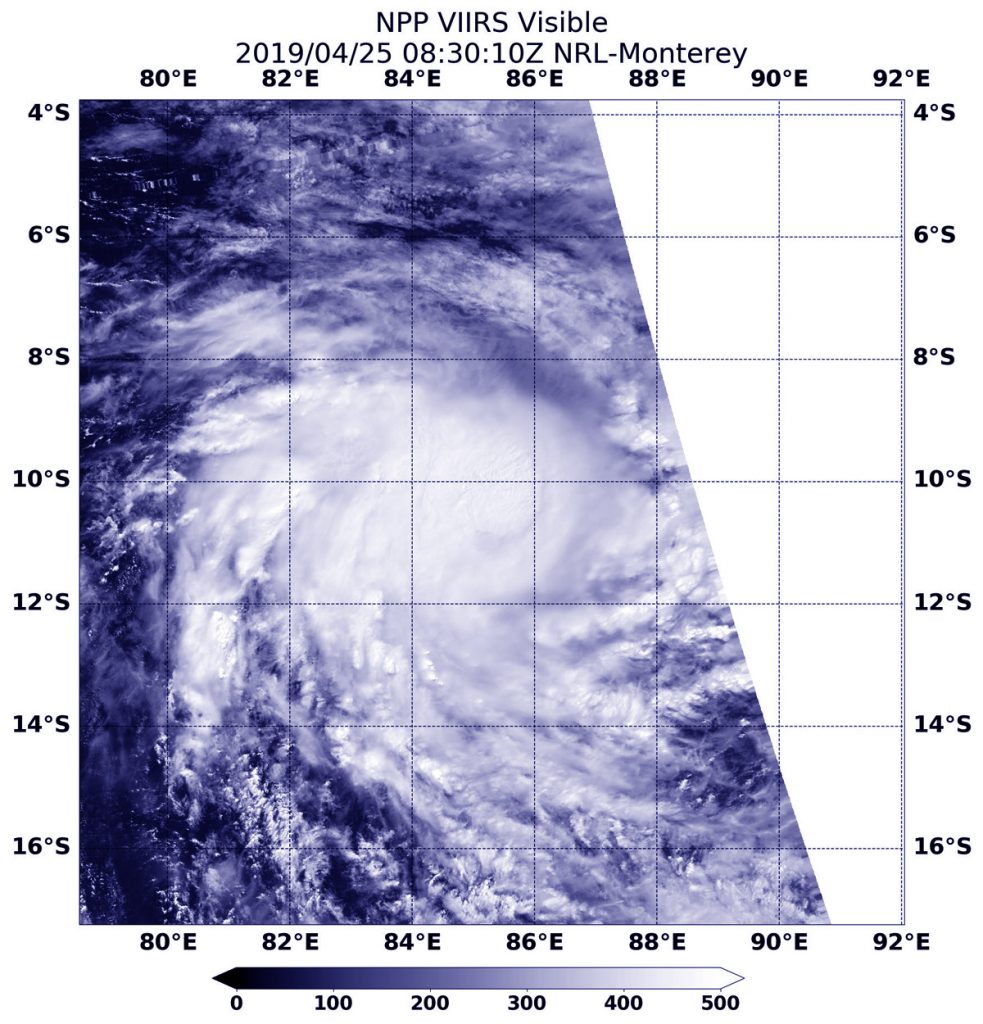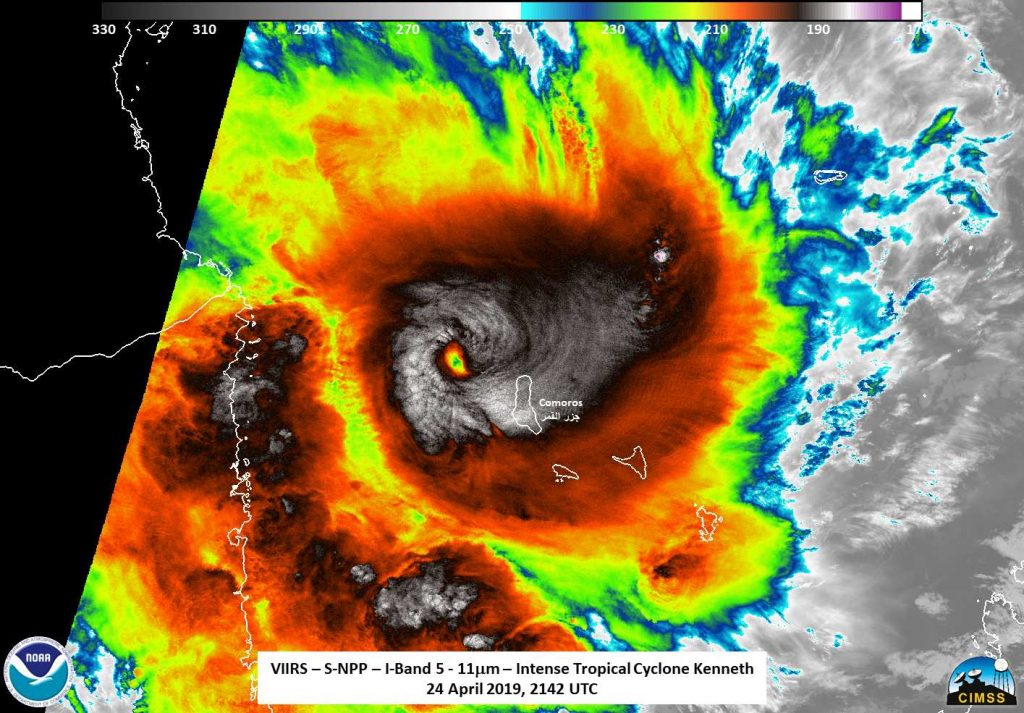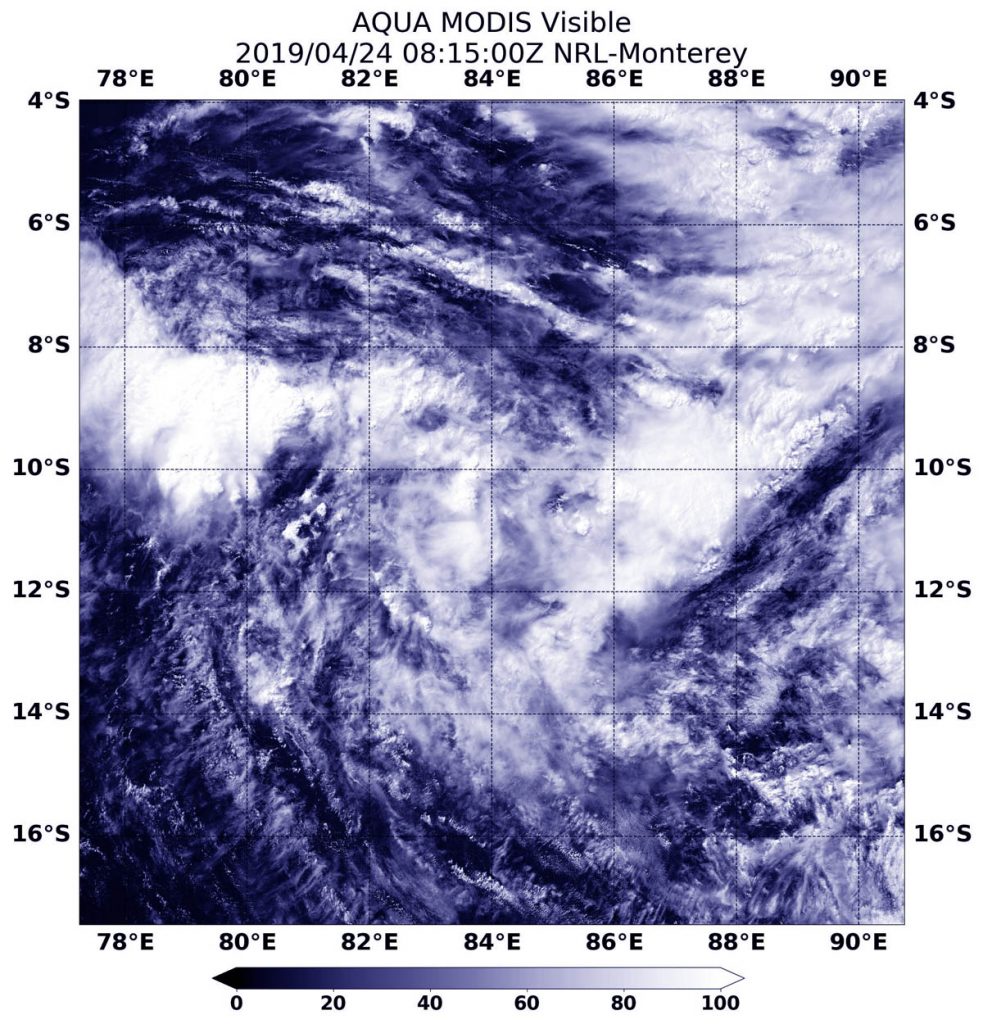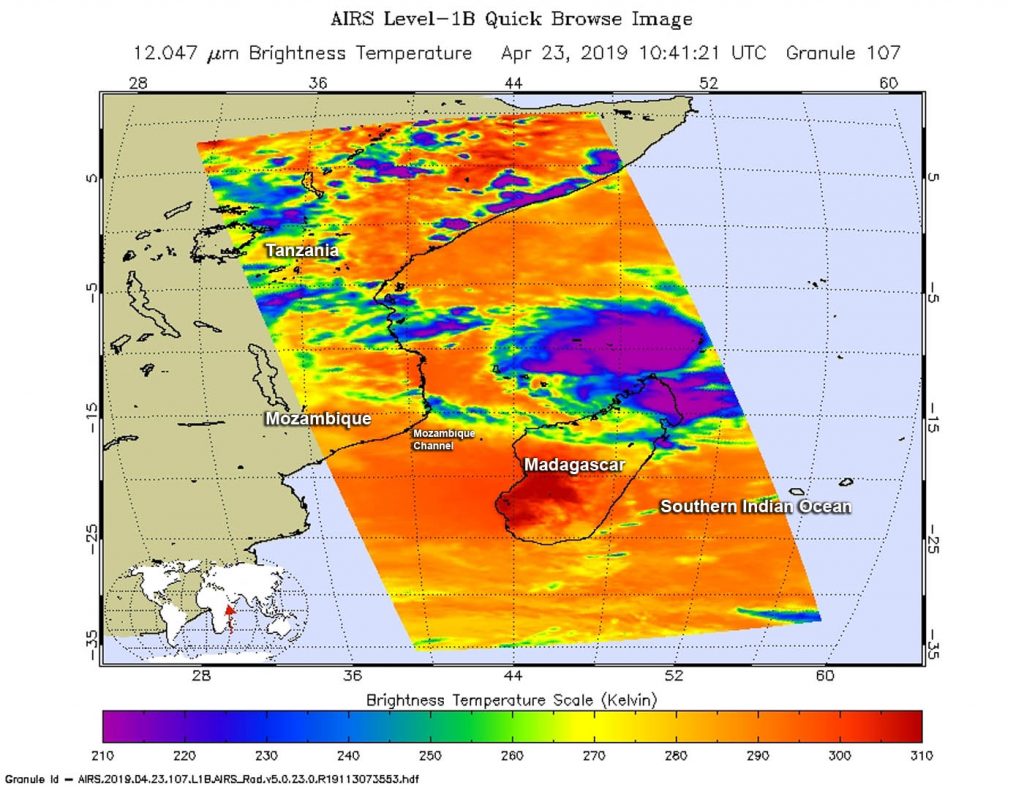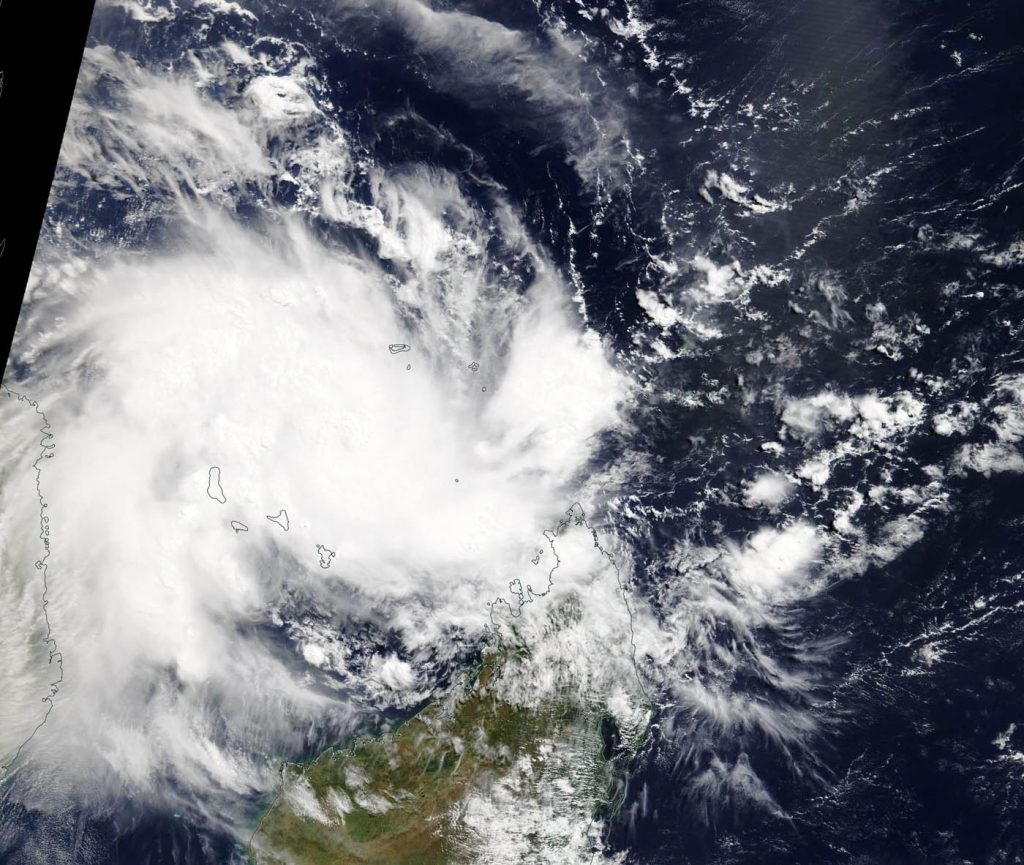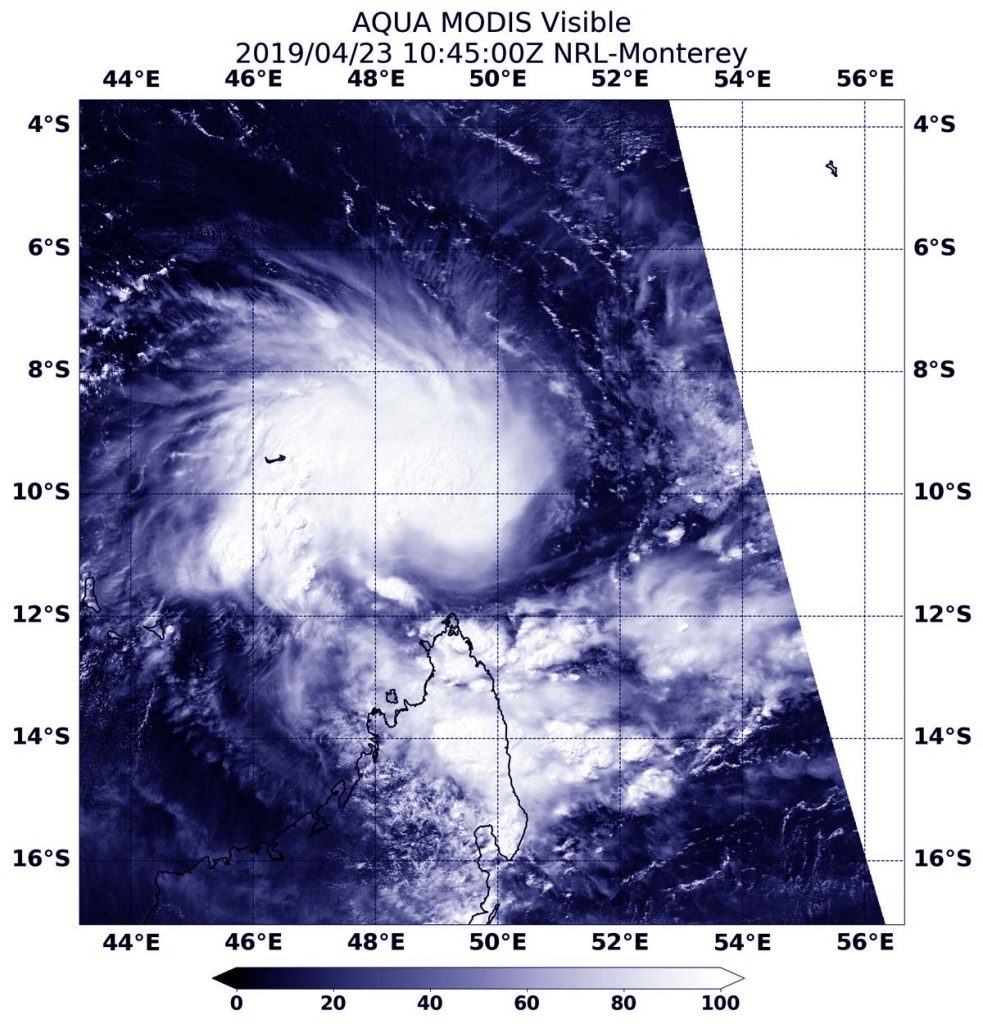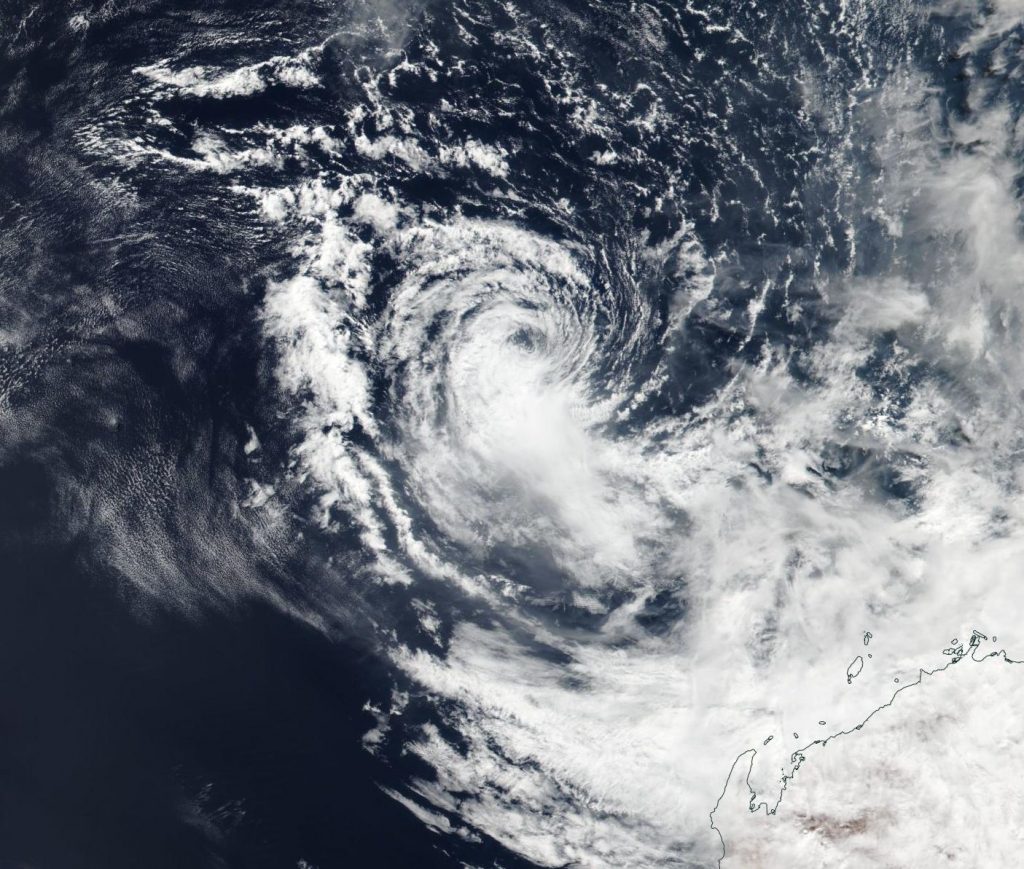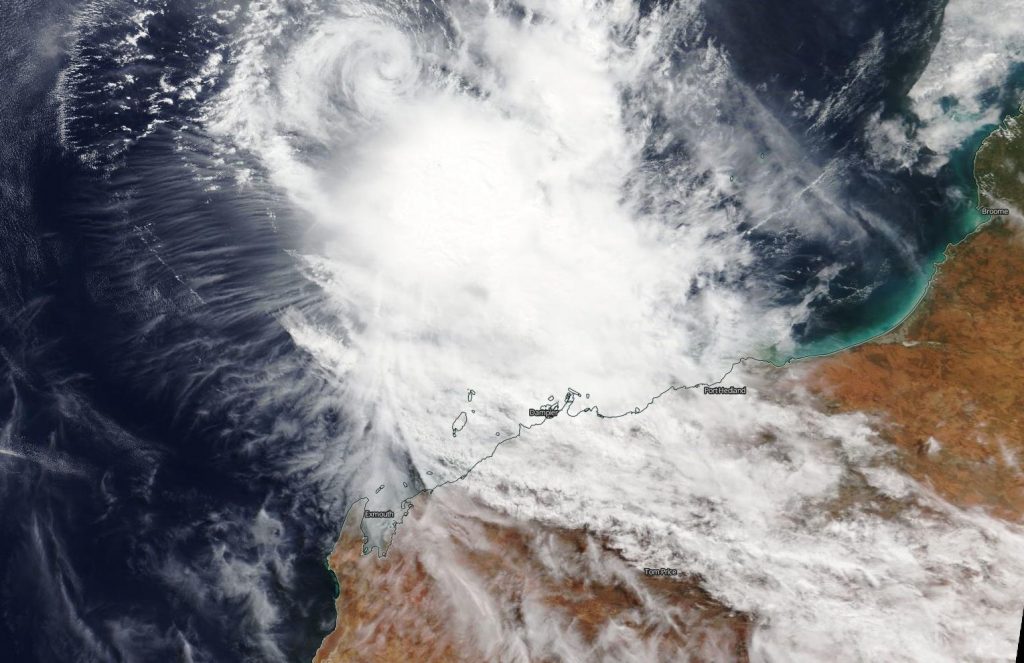Apr. 26, 2019 – NASA Sees Remnants of Tropical Cyclone Kenneth Over Northern Mozambique
NASA’s Aqua satellite provided a visible image of the remnant clouds and storms still lingering over northern Mozambique on April 26. Tropical Cyclone Kenneth made landfall in the less-populated northern reaches of Mozambique on April 25.
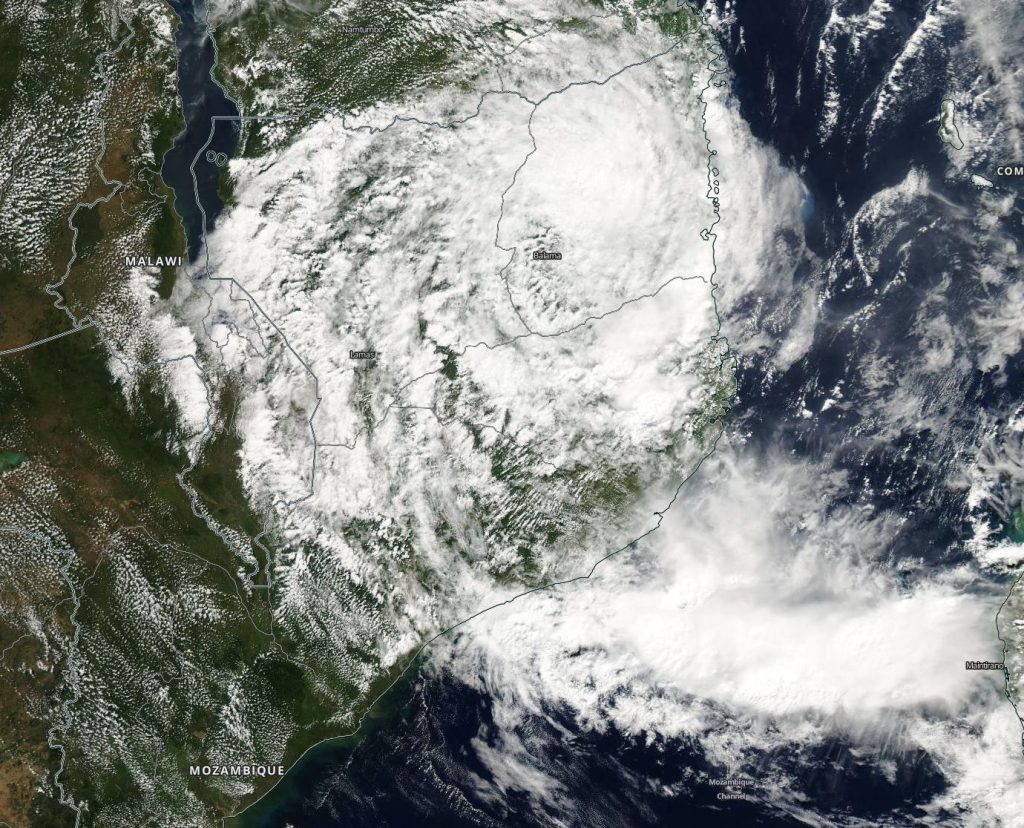
On April 25, NASA’s Aqua satellite passed over Mozambique. The Moderate Resolution Imaging Spectroradiometer or MODIS instrument captured a visible image of the remnants of Tropical Cyclone Kenneth as it continued to linger over the country and generate rainfall. According to the Republic of Mozambique’s National Meteorological Institute (NMI), on April 25, “Kenneth was nestled in the valley of Cabo Delgado, located in the District of Macomia.”
According to the Joint Typhoon Warning Center, Kenneth made landfall with maximum wind speeds of 140 miles per hour (220 kph), the equivalent of a Category 4 hurricane.
Kenneth weakened rapidly overnight, as it moved north of Pemba. Part of the area Kenneth moved over includes the Parque Nacional das Quirimbas or the National Park of Quirimbas. The park covers 68 miles (110 kilometers) and 11 of the southernmost Quirimbas islands. On the mainland, the park is located along the northeast coast of Mozambique.
According to CNN meteorologist Chad Myers, a storm surge was recorded between 16.4 and 23 feet (5 and 7 meters) high in areas located north of Pemba. Kenneth has already dropped over 9.8 inches (250 mm) of rainfall and the storm is expected to continue raining over Mozambique for the next several days.
NMI forecasters noted on April 25, “Heavy rains are expected to be very strong (1.9 to 3.9 inches or 50 to 100 millimeters in 24 hours), strong gusts up to (43.4 mph) 70 kilometers per hour and severe thunderstorms in the provinces of Cabo Delgado (all districts), Nampula (districts of Nacala, Memba, Erati, Nacarroa, Muecate, Namapa, Island of Mocambique, Mussoril and Monapo) and Niassa (districts of Mecula, Marrupa and Nipepe).”
For updated alerts from NMI, visit: http://www.inam.gov.mz/index.php/pt/alertas-e-avisos
By Rob Gutro
NASA’s Goddard Space Flight Center

